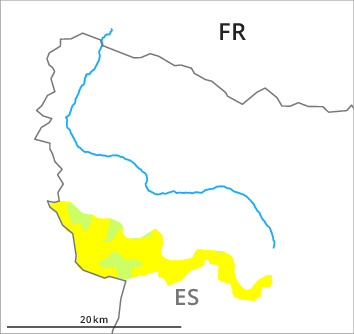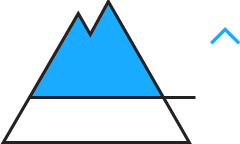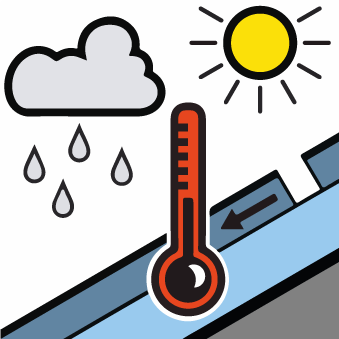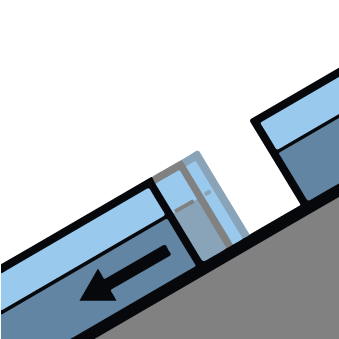
Danger level

2200m
Avalanche Problem

Wind-drifted snow

2200m


Wet snow

2300m


Wind slabs and wet snow represent the main danger.
As a consequence of new snow and a light to moderate southerly wind, wind slabs formed on Sunday in particular adjacent to ridgelines on northwest, north and northeast facing slopes. These can as before be released, even by small loads in isolated cases, but they will be small in most cases.
Already in the early morning small gliding avalanches and moist snow slides are possible. These avalanche prone locations are to be found on steep slopes of all aspects below approximately 2300 m and on sunny slopes in all altitude zones.
Weak layers in the old snowpack can be released in isolated cases and mostly by large additional loads on little-used, rather lightly snow-covered shady slopes. Areas where the snow cover is rather shallow where hard layers are lying on a weakly bonded old snowpack are especially unfavourable. In very isolated cases the avalanches in these loacations are large.
Restraint should be exercised because avalanches can sweep people along and give rise to falls.
Already in the early morning small gliding avalanches and moist snow slides are possible. These avalanche prone locations are to be found on steep slopes of all aspects below approximately 2300 m and on sunny slopes in all altitude zones.
Weak layers in the old snowpack can be released in isolated cases and mostly by large additional loads on little-used, rather lightly snow-covered shady slopes. Areas where the snow cover is rather shallow where hard layers are lying on a weakly bonded old snowpack are especially unfavourable. In very isolated cases the avalanches in these loacations are large.
Restraint should be exercised because avalanches can sweep people along and give rise to falls.
Snowpack
>In the southernmost and westernmost part of Aran up to 10 cm of snow fell on Sunday above approximately 2000 m. The southerly wind has transported the new snow. In particular high altitudes and in shady places that are protected from the wind: The fresh wind slabs are lying on soft layers.
Sunny slopes: The surface of the snowpack will freeze very little and will already soften in the late morning.
At low altitude from a snow sport perspective, in most cases insufficient snow is lying.
Sunny slopes: The surface of the snowpack will freeze very little and will already soften in the late morning.
At low altitude from a snow sport perspective, in most cases insufficient snow is lying.
Tendency
The danger of dry slab avalanches will decrease. The danger of gliding avalanches and moist snow slides will persist.




